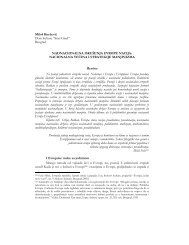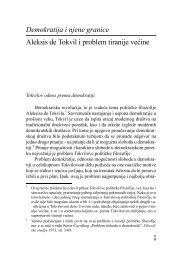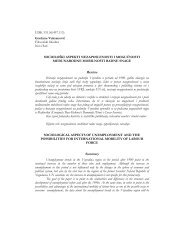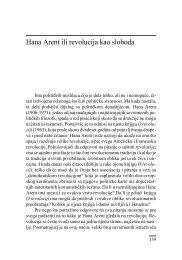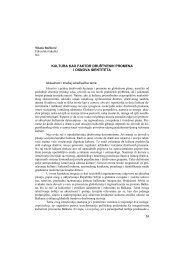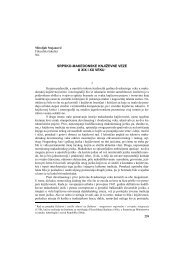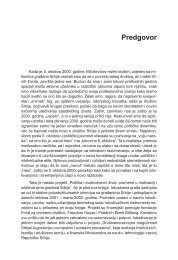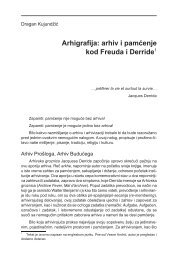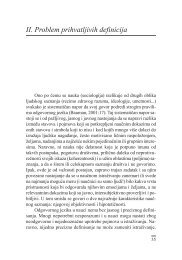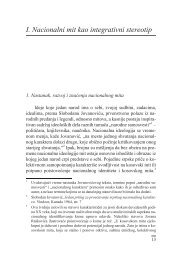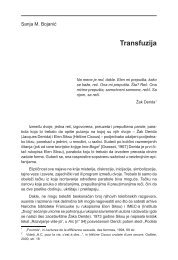PUT DO SRPSKOG OKTOBRA - komunikacija
PUT DO SRPSKOG OKTOBRA - komunikacija
PUT DO SRPSKOG OKTOBRA - komunikacija
You also want an ePaper? Increase the reach of your titles
YUMPU automatically turns print PDFs into web optimized ePapers that Google loves.
Priroda poretka i oktobarski prevrat 55<br />
Schmitter,Philipe. 1986. „An Introduction to Southern European Transition from Authoritarian<br />
Rule: Italy,Greece,Portugal and Turkey“,In: Transition from Authoritarian<br />
Rule, Southern Europe,Eds.Guillermo O’Donell,Philipe Schmitter and Laurence<br />
Whitehead,Baltimore and London: The John Hopkins University Press.<br />
Soroš,D`ord`,1999. Od kapitalizma ugro`eno društvo,Beograd: Samizdat,B-92.<br />
Todoroviæ,Mirjana. 1998. „Politika i Borba: sve je Jul osim avgusta a i on je ako nije<br />
glup…“,U: Odsutne partije, Beograd: Centar za slobodne izbore i demokratiju.<br />
Vuèetiæ,Slobodan,2000. U krugu poraza, Beograd: Stubovi kulture.<br />
The Nature of the Order and the October Overthrow in Serbia<br />
Summary: In Serbia democratic institutions – political parties,parliament,multiparty<br />
elections – were introduced in 1990,so it would be an oversimplification to call this order<br />
authoritarian. At the same time,Serbia’s political order did not ensure an “equal arena”<br />
for mutual contest to all political parties; therefore it cannot be called democratic either.<br />
Hence the political order in Serbia is most accurately classified as the quasi-democratic<br />
type analyzed by Larry Diamond. This definition held until 1998 when the regime started<br />
increasingly to resort to violence against opposition parties,independent media and<br />
NGOs. In this way the type of order was essentially changed: quasi-democracy degenerated<br />
into a pure authoritarian type. After the defeat in the September 2000 elections this<br />
type of order in Serbia responded first by attempted fraud and then,when citizens in response<br />
to this organized protests,by violence; on 5 October citizens manifested readiness<br />
to strike back. Facing this,the apparatus of repression (police,army) withdrew,<br />
which marked the beginning of the implosion of the ruling order. The readiness of citizens<br />
to react to violence (i.e. the presence of potential force) was an essential factor in toppling<br />
the authoritarian order in Serbia.<br />
Key words: democratic institutions,quasi-democracy,authoritarian regime,potential<br />
force,transfer of power.



